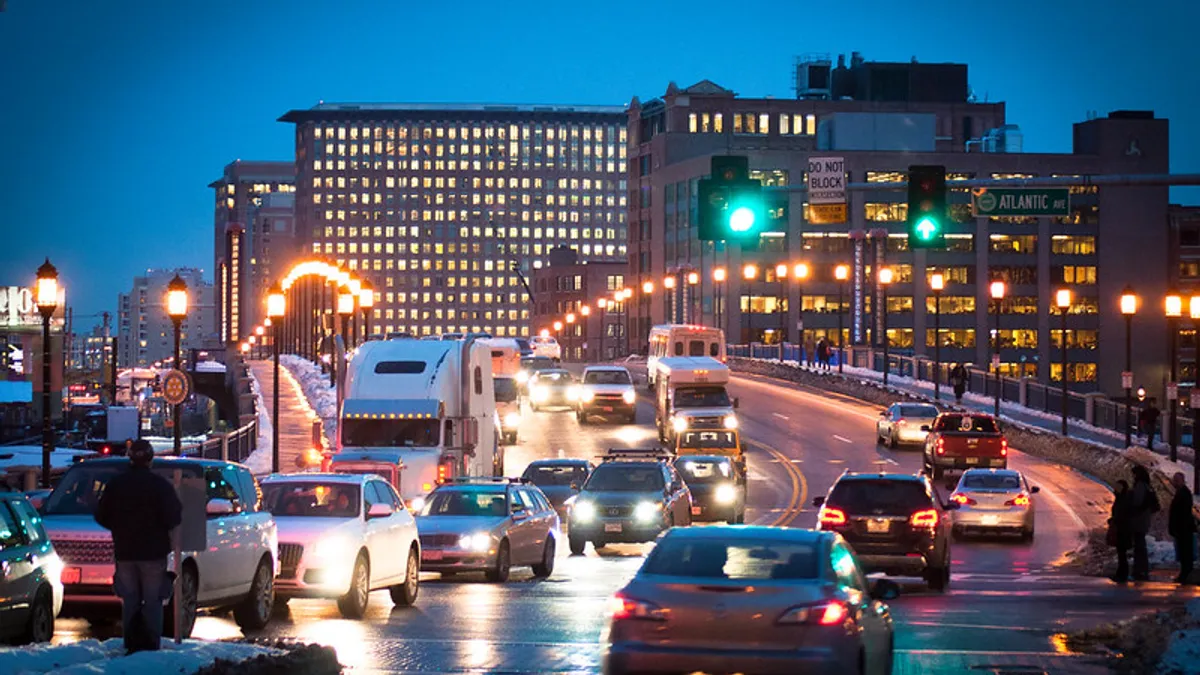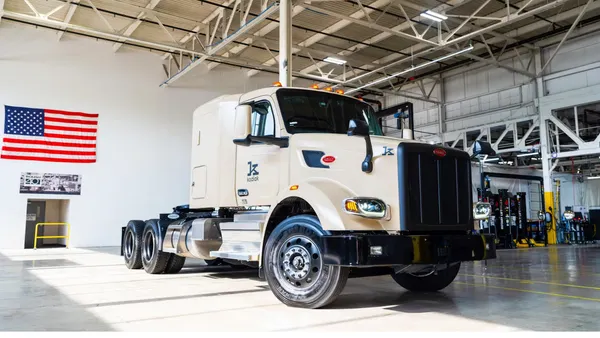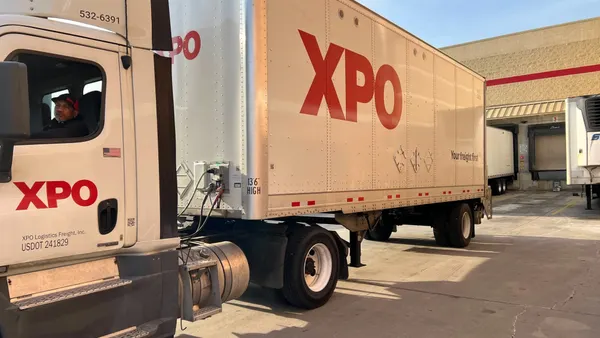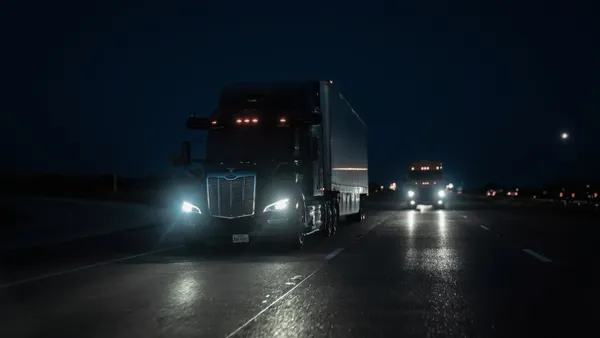Dive Brief:
- Truck traffic is back to normal in many states, according to research from Samsara, a telematics and technology firm. "U.S. states have returned to above 95% of pre-COVID-19 commercial driving activity, both in terms of miles driven and vehicles on the road. States that had limited or no shelter-in-place orders are now seeing a 7% average increase in both areas," the company said in a blog post on Tuesday.
- Long-haul trucking and construction remain stable, reaching pre-COVID-19 commercial driving activity, Samsara said.
- Certain unsafe driving behaviors have significantly declined. Those behaviors include harsh braking and acceleration, which declined nationally by about 40%. But "emptier roads have also resulted in a 20% increase in severe speeding," the company reported.
Dive Insight:
Samsara's research indicates trucking is in a good position to recover, relative to other industries. The company found long-haul transportation experienced one of the quicker recoveries from the COVID-19 pandemic and related shutdowns.
Given the nation's needs for goods from all parts of the country, that is not surprising. "Food and beverage and wholesale trade transportation have also essentially reached pre-COVID-19 commercial driving activity," Samsara found.
Samsara said trucking's rebound contrasts sharply with the industries of passenger transit and education.
"Passenger transit activity has stabilized at around 35% of pre-COVID-19 levels and educational-services activity remains below 10%," said Muhammad Ali Akhtar, director of data science at Samsara. "Other industries, like oil and gas, have not yet recovered from COVID-19’s implications, operating at 60% of pre-COVID-19 commercial activity."
And some sectors are above normal, Samsara found. The construction industry is operating at 5% above pre-COVID-19 miles logged in recent weeks.
"While requests for new construction projects might have slowed down, existing construction for public works, commercial, or residential projects have largely been allowed to resume work in early phases of some state reopenings if specific safety protocols are followed," Akhtar wrote.
Construction, which makes use of flatbed trailers, has apparently helped boost rates. DAT reported spot rates for flatbeds were highest in the Midwest, at $2.08 per mile. And the Southeast is also seeing high flatbed rates at $2.06 per mile. Flatbed rates are the lowest in the Northeast at $1.80 per mile.
Samsara defines severe speeding as 11 mph or more over the posted speed limit. In early April, severe speeding rose 20% above the pre-COVID-19 baseline, "indicating that while there may be a decline in some risky driving behavior (like harsh braking and accelerations), there are certain driving behaviors that are making roads more dangerous too."
The COVID-19 shutdowns had diverse effects on trucking, and not all of them were negative. In March, the American Transportation Research Institute (ATRI) reported "unprecedented" truck movement, especially through some of the nation's tightest bottlenecks.
Some trucks were traveling at more than double the speed at which they usually move during rush hour at bottlenecks, such the intersection of I-85 and I-285 in Atlanta, known locally as "Spaghetti Junction." ATRI found truck speeds are typically less than 15 mph due to congestion at that time and place. But that week in March, truck speeds averaged 53 mph through the interstates' intersection, still below the legal speed limit.












